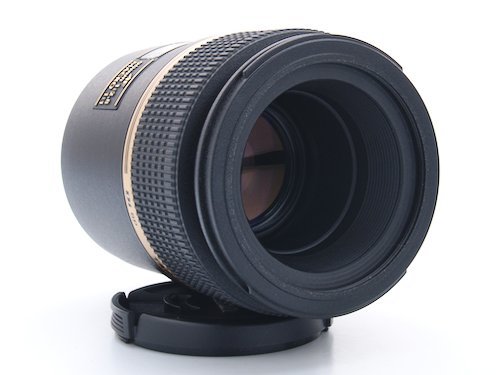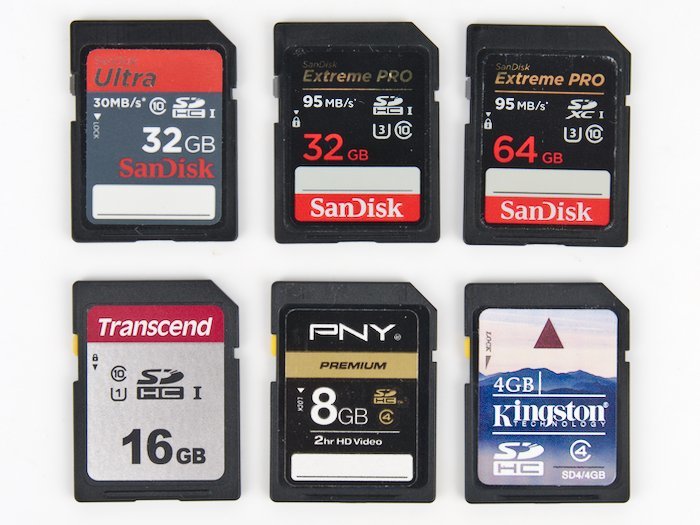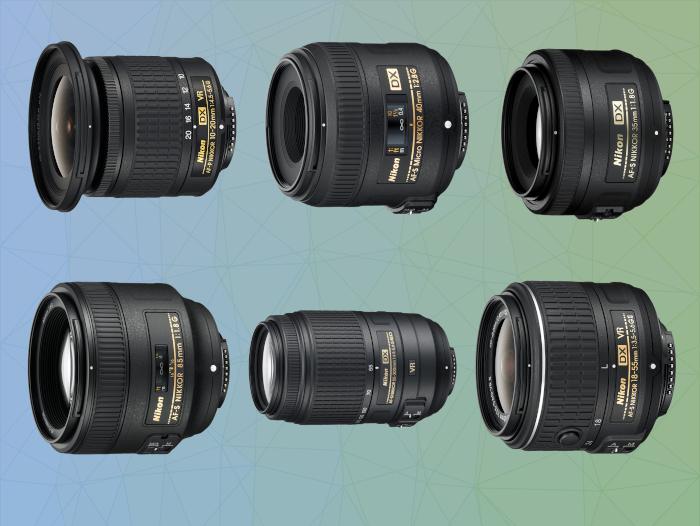
Tamron SP Di 90mm f/2.8 Macro AF Lens Review
- Nathaniel Stephan
- 90mm lenses , Macro lenses
- April 21, 2019
Table of Contents
Used copies of the Tamron SP Di 90mm f/2.8 Macro lens have the best price/performance. The lens is sharp from f/5.6-f/11 with no chromatic aberration. Weighing 418g (14.7oz), the lens is the lightest macro lens I have reviewed in the 90-105mm focal length range. Working distance is comparable to 105mm lenses because the front element is recessed.
Comparable Lenses
Lens Specifications
| Manufacture | Tamron |
| Made in | Japan |
| Year Released | 2003? |
| Original Price | $479.95 ($30 rebate)* |
| Elements Groups | 10 ele. 9 gr. |
| Focal Length | 90mm |
| Aperture | f/2.8-32 |
| # Aperture Blades | 9 |
| Aperture Control | Electronically Controlled |
| Focus Type | Manual & Auto |
| Hard Infinity Stop | Yes |
| Magnification | 1:1 |
| Minimum Focus Distance | 29cm (12”) |
| Working Distance | 10cm (4") |
| Filter Threads | 55mm |
| Weight | 418g (14.7oz) |
| Dimensions | ⌀72mm x 120mm (2.8" x 4.75") |
Original price was taken from an archived Adorama page from June 19, 2004. There was a $30 rebate being offered at that time.
Accessories
The lens original came with a lens hood, part 2C9FH, that has a bayonet mount on the outside of the filter ring. The front element is located far enough back in the lens that the lens hood is unnecessary.
Lens Design
A notable design feature is the clutch style switch to change between auto and manual focus.
There is no need to be able to see the barrel of the lens to move a switch or locking ring. As long as you can find the rubberized focus ring, you can make the switch.
Pulling the focus ring back for manual focus will reveal a blue line above the focus ring. I find the clutch easier to use than the focus selection methods on other macro lenses.
The limit switch on the side of the lens limits focus from infinity to 45cm. Autofocus is faster and more accurate with close focusing disabled. Newer macro lenses can have several focusing range settings.
Close focusing causes the front of the lens to extend out from the barrel. The front element/group(s) and the aperture move forward together.
There is no change in the distance between the front element and the front of the lens. Focusing at 1:1 does not cause the lens to become front heavy or unbalanced.
A majority of the weight stays in the rear of the lens, which makes it easy to keep steady.
There are 9 aperture blades. More blades will produce smoother bokeh when the lens is stopped down.
Among the lenses in the Tarmon’s price range, 9 is the most aperture blades offered in any lens.
Build Quality
The outer shell and front extension are plastic. The bayonet mount is nickel-plated brass.
Unlike older lenses, the plastic contains fiberglass fibers for reinforcement.
There is also a slight amount of texture either painted on or as part of the injection molding process.
The only area of concern is the plastic filter threads. Heavy use from filters or a ring light can cause wear over time.
At 450g with both caps and the lens hood, the Tamron is the lightest telephoto macro lens I have owned. Having a shorter focal length of 90mm versus 105mm is part of the reason.
As a comparison, the Nikon AF Micro Nikkor 105mm f/2.8 also has a plastic barrel, but it weighs 574g with caps.
Usage & Working Distance
A Nikon D750 was used for testing. The is well balanced on the camera. The lightweight makes the lens easier to carry around than my other macro lenses. Nothing about the layout of the lens has bothered me.
The focus ring is large and the widest part of the lens. There’s about 540 degrees of travel from infinity to 1:1 and 200 degrees from infinity with the limit switch on.
Working distance is 4" (10cm) when at 1:1 magnification. The Lester A. Dine 105mm f/2.8 has 5-5/8" (14.3cm) at 1:1 and the AF Micro Nikkor 105mm f/2.8 has 5-3/8" (13.6cm). A lens hood will be needed far more often with the Dine or Nikkor because their front elements are no recessed. When using a lens hood, there will be no difference in working distance between the lenses.
Autofocus performance is mediocre. Focusing closer than 10 feet (3m) causes the effective aperture to be f/3.2. As a result, the f/2.8 focus points will not longer work. The motor is slow and loud, which shouldn’t come as a surprise because of the distance the lens moves to focus. With the limit switch set, the autofocus is usable.
Close focusing is a challenge for autofocus. When the lens misses focus it will zoom out and then back in. If the camera is being handheld, small movements will cause the lens to miss focus due to a small depth of field. I prefer to set the magnification I want and focus by moving the camera. Unless a camera and lens combination can do in body image stacking, I don’t care about autofocus.
Test Shot Sharpness Comparison
The D750 displays the effective aperture of the lens. This is why the test shots do not range from f/3.2 to f/32 instead of f/2.8 to f/32. This feature removes the need to look up EV compensation in the lens manual.
- f/3.2 - Sharp in the center. Corners are a bit soft with a hint of chromatic aberration.
- f/4 - A small overall improvement over f/3.2.
- f/5.6 - Entire image is sharp with no signs of chromatic aberration.
- f/8 - Sharpest aperture.
- f/11 - Almost identical to f/8.
- f/16, f/22, f/32 - Diffraction sets in and gets progressively worse.
Magnification at 1:1
Nikon’s display the effective aperture for lenses. This should be helpful because macro lenses extend to increase magnification. As the lens extension increases, the focal length increases. The opening for the aperture stays the same size. As a result, the effective aperture will be smaller.
At 1:1 magnification the exposure compensation is +2 EV. At the widest aperture, the camera will display f/5.6. That is because f/5.6 is 2 stops higher than f/2.8.
In practice, it did not work out well. I tried using a Minolta Auto Meter VF to get consistent exposures. Images came out underexposed. As a result, I took a few exposures for each stop and included the best one.
Affiliate Advertising Disclosure
Outside the Shot is a participant in the Amazon Services LLC Associates Program, an affiliate advertising program designed to provide a means for sites to earn advertising fees by advertising and linking to Amazon.com.
As an eBay Partner, I may be compensated if you make a purchase. I also participate in affiliate advertising programs with KEH and Adorama. More can be found on the Affiliate Disclosure page.
Used Price and Where to Buy
A newer version of the lens has been released, but new copies are still being sold. Gray market copies of the lens are also available, for a large discount, but without the warranty.
However, the real value is in buying a used copy of the lens. If you look around you can find an incredible deal when compared to buying the lens new.
Just be careful because the lens was sold in several different lens mounts. Check to make sure you get the correct lens mount for your camera. Also, keep in mind that more popular lens mounts will sell for more money.
Check current prices on Amazon or eBay.
Conclusion
There is no reason to buy a new copy of the Tamron 90mm f/2.8 SP Di. If you want a new lens, buy either of the two newer versions of the lens.
Used lenses offer the best price to performance value I have seen for a macro lens. You can’t go wrong picking up a copy at the lower end of the price range. Put in the time and effort to snipe an auction and you can make out like a bandit.
If you use lots of filters, you might want to pass on the lens. As noted above, the filter threads on the lens are plastic.
An alternative in the same price range is any of the Kino Precision made 105mm f/2.8 macro lenses. I have a Lester A. Dine version that has impressive performance. For more money, there is the Tokina 100mm f/2.8 AT-X Pro. I have not used the Tokina, but it has a reputation for being a bit better than the Tamron.
If you want to learn more about macro, have a look at the Beginner’s Guide to Macro Photography.
Lens Versions
- Tamron SP 90mm f/2.5 1:2 Macro 52B Adaptall 2
- Tamron SP 90mm f/2.5 1:2 Macro 52BB Adaptall 2 - 55mm filter threads
- Tamron SP 90mm f/2.8 1:1 Macro 72B Adaptall 2
- Tamron SP AF 90mm f/2.8 1:1 Macro 172E
- Tamron SP Di 90mm f/2.8 1:1 Macro 272E
- Tamron SP 90mm f/2.8 Di VC USD 1:1 Macro
- Tamron SP 90mm f/2.8 Di 1:1 Macro VC USD IS
This version is also available in the following mounts: Nikon F, Canon EOS, Pentax K, and Sony A.
The K mount version is the only version that has an aperture ring. An adapter will not need electronics to control the aperture. That makes the K mount version the easiest to adapt to mirrorless cameras.
Nikon, Canon, and Sony all have adapters so their SLR mount lenses can be used on their mirrorless cameras. These adapters are more expensive than the lens.

